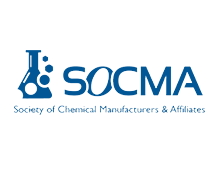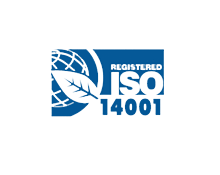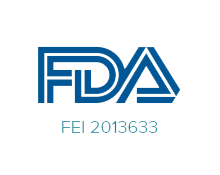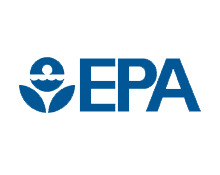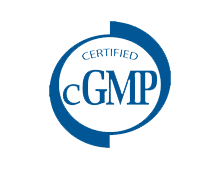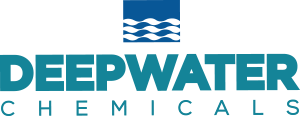1. Chemical Product Identification
GHS Product Identifier: 103.44 EthylenediamineDihydroiodide Solution, EDDI
Manufacturer/Supplier:
Deepwater Chemicals, Inc.,
196122 E County Road 40
Woodward, Oklahoma 73801
Tel: 1-800-854-4064
Website: www.deepwaterchemicals.com
Recommended Use:
EDDI is used as an additive in pet food and cattle feed with high bioavailability. Used to prevent iodine deficiency. This salt is one of the major uses of elemental iodine. EDDI is generally recognized as safe (GRAS)only as a nutrient source of iodine. Administration of EDDI also has preventative effects on foot rot in cattle.
(24) Hour Emergency Contact: Chemtrec 800-424-9300
Technical Service: 580-334-3539

2. Hazard Information
Hazard Identification
Signal Word: Warning! Acute toxicity, Oral (Category4) Harmful if Swallowed. Skin corrosion/irritation, Category 2, Causes skin irritation.Serious eye damage/eye irritation, Category 2A. Causes eye irritation. Specific target organ toxicity-single exposure (Category3), Respiratory System, May cause respiratory irritation.
3. Composition/Information on Ingredients
| Chemical Identity | Molecular Weight | Chemical Formula | CAS# | EINECS# | Percent% |
|---|---|---|---|---|---|
| Ethylenediamine Dihydroiodide | 315.92 | C2H10I2N2 | 5700-49-2 | 227-186-8 | 45 |
| Water | 18.01 | H2O | 7732-18-5 | 231-791-2 | 55 |
4. First Aid Measures and Acute Health Hazards
Eye Contact:
Causes eye irritation. IF IN EYES:Flush with copious amounts of water for 30 minutes, occasionally lifting the upper and lower lids. Get medical advice/attention.
Skin Contact:
Do not get into eyes, on skin or on clothing. Causes skin irritation.Causes burning on lesions or cuts if present on skin.IF ON SKIN:Remove/Take off immediately, all contaminated clothing. Rinse skin with water/shower. Wash hands thoroughly after handling.
Ingestion:
Ingestion may irritate the gastrointestinal tract. IF SWALLOWED:Immediately call a POISON CENTER or doctor/physician.
Inhalation:
Inhalation of vapors/mistscan irritate the respiratory tract. IF INHALED:If breathing is difficult, remove victim to fresh air and keep at rest in a position comfortable for breathing. Give oxygen. Get medical advice/attention.
Chronic Exposure/Target Organs:
Chronic exposure of iodides may produce“iodism”, which maybe manifested by skin rash, running nose, headache and irritation of the mucous membranes. Weakness, anemia loss of weight and general depression may also occur.
Aggravation of Pre-existing Conditions:
Trigger and/or worsen hyperthyroidism and hypothyroidism then cause temporary or even permanent thyroid conditions.
5. Fire Fighting Measures
| Flash Point: Not Applicable | Method Used: Setaflash Closed Cup |
|---|---|
| LEL %: No Data Available | Auto Ignition Temp: NDA |
| UEL%: No Data Available |
Fire and Explosion Hazards : Noncombustible. Fire may produce toxic or irritating gases or fumes of Iodine.
Extinguishing Media: Use dry chemical, CO2or water spray.
Fire Fighting Instructions:
Small Fires: Use dry chemical, CO2 or water spray.
Large Fires: Use water spray, fog or regular foam. Move containers from area if you can without risk. Dike fire control water for later disposal. Do not scatter material. Wear full protective clothing and NIOSH approved SCBA apparatus with a full-face respirator.
See the Emergency Response section, Fire, from the Emergency Response Guidebook, ERG# 153 for additional information.
6. Accidental Release Measures
Evacuation:
See the Table of Initial Isolation and Protective Action Distances from the Emergency Response Guidebook, ERG# 153.
Containment:
Ventilate area of leak and spill. Wear appropriate personal protective equipment as specified in Section 8. Isolate hazard area. Keep unnecessary and unprotected personnel from entering. Eliminate source of spill if possible. Contain and recover solid when possible. Collect in an appropriate container or absorb with an inert material, i.e, vermiculite, dry sand earth, and place in a chemical waste drum. Do not use combustible materials, such as sawdust. Do not flush to sewer!
Reporting:
In the event of a Hazardous Materials Incident during transportation, the regulations in 49CFR 171.15 and 171.16 are to be followed. Under 40CFR 302.6 (CERCLA), EthylenediamineDihyroiodidedoes not have a RQ.
7. Handling and Storage
Storage Conditions:
Store in UN-rated fiber, HDPEdrumor Tote. Store in a cool, dry, well-ventilated area away from incompatible substances, direct sunlight or elevated temperatures. Keep containers tightly closed using a tamper-evident seal. Protect against physical damage. Shower and dispose of outer clothing and change to clean garments at the end of the day. Wash hands before eating and do not eat, drink or smoke in workplace. Containers of this material may be hazardous when empty since they retain product residues.
8. Exposure Controls/Personal Protection
| Substance ( CAS#) | ACGIH-TLV | ACGIH-STEL | OSHA-PEL | OSHA-STEL |
|---|---|---|---|---|
| Ethylenediamine Dihydroiodide(CAS# 5700-49-2) | Not Established | Not Established | Not Established | Not Established |
Engineering Controls/Ventilation:
Use appropriate and MACT engineering controls to reduce air contamination to approved or permissible standards. Where such systems are not effective or not feasible, wear suitable personal protective equipment, which performs satisfactorily and meets local/national standards.
Eye/Face Protection:
Avoid eye and skin contact with liquid. Eye contact can be avoided by wearing a full-face shield or safety glasses with side and brow protection. Refer to OSHA’s 29 CFR 1910.133 Eye and Face Protection Standard for regulatory compliance.
Skin Protection:
Proper protective glovesshould be worn when handling hazardous materials. Glove selection guides should be consulted. Rubber, Nitrile, PVC coated, Neoprene, Vinyl or Butyl gloves offer proper protection. It is recommended to wear full skin protection. This can be achieved by wearing breathable chemical suits, Teflon impregnated, with hoods and elastic bands for the wrists and ankles.
Respiratory Protection:
Always use a NIOSH approved, at minimum, P95 filtration efficiency respirator or, NIOSH P100 cartridge for a full-face respirator. Observe the manufacturer’s cartridge service-life and the recommended change schedule. Refer to OSHA’s 29 CFR 1910.134 Respiratory Protection Program for regulatory compliance is the use of these respirators.
9. Physical and Chemicals Properties
| Appearance: | Clearto yellowto amberliquid |
| Odor: | Slight |
| Physical State: | Liquid |
| pH | 4.5-5.0 in a saturated solution |
| Boiling Point: | Not Applicable |
| Melting Point: | No data |
| Freezing Point: | 18 Degrees F |
| Vapor Pressure: | 14 mmHg @ 20 Deg. C |
| Vapor Density: | <1 |
| Specific Gravity | 1.40 |
| Evaporation Rate: | No data |
| Solubility in Water: | Soluble |
| Percent Solids by Weight: | Not applicable |
| Percent Volatile: | No data |
| Refractive Index | No data |
| Volatile Organic Compounds | None |
| Molecular Weight | 315.92 |
Note: The physical data presented above are typical values and should not be construed as a specification.
10. Stability and Reactivity
Stability:
Stable under ambient temperatures and pressure, but will yellow as a result of oxidation by the formation of freeiodine. Sodium Iodide is highly hygroscopic.
Incompatible Materials:
Violent reaction or ignition on contact with diazonium salts
Hazardous Polymerization:
Will not occur.
11. Toxicological Information
Substance (CAS No.) Ethylenediamine Dihydroiodide 5700—49-2
| Acute Testing | Route of Entry | Value/Critical Effects |
|---|---|---|
| Eye Irritation | Eye-rbt | No Data Available |
| Skin Irritation | Skn-rbt | No Data Available |
| Skin Sensitization | ||
| Dermal Toxicity | None published | |
| Oral Toxicity | Orl-rat | No Data Available |
Subchronic Exposure:
This substance has not been fully investigated to provide any information.
Chronic Exposure/Carcinogenicity:
This substance has not been fully investigated to provide any information.
Teratology/Developmental Toxicity:
Human teratogenic effects by ingestion
Reproductive Toxicity:
Experimental teratogenic and reproductive effects
Mutagenicity/Genotoxicity:
This substance has not been fully investigated to provide any information.
Neurotoxicity:
This substance has not been fully investigated to provide any information.
12. Ecological Information
Terrestrial Fate:
This substance has not been fully investigated to provide any information.
Aquatic Fate:
This substance has not been fully investigated to provide any information.
13. Disposal Considerations
Dispose of in a manner consistent with federal, state and local regulations. This material is not listed as an Underlying Hazardous Constituent (UHC). The Hazardous Waste Characteristic of Toxicity has not been performed on this compound using the TCLP Method 1311.Recover and Recycling of Iodides is standard practice in the manufacturing industry. Refer to your manufacturer/recycler for additional information.
14. Transport Information
| SHIPPING CRITERIA | US DOT | IATA |
|---|---|---|
| Proper Shipping Name | Not Regulated | Not Regulated |
| Hazard Class | ||
| Identification Number | ||
| Packing Group | ||
| Shipping Label | ||
| Additional Marking Requirement |
15. Regulatory Information
US Federal Regulations:
OSHA: This material is not considered a Highly Hazardous Chemical and has no established Permissible Exposure Limit (PEL).
EPA:
Clean Air Act-This material is not listed as a Hazardous Air Pollutant (HAP). This material does not contain any Class1 or 2 Ozone Depletors.
Clean Water Act-This material is not listed as a Hazardous Substance, Priority Pollutant or as a Toxic Pollutant.
TSCA-CAS# 5700-49-2is listed on the Public Inventory.
SARA Title III-
Section 302: RQ=Not Applicable
Section 302: This product does not have a Threshold Planning Quantity (TPQ)
Section 313: This material subject to reporting under 40 CFR Part 372, Toxic Release Inventory.
Individual Country Lists:
This material can be found on the following country listings; Australia (AICS), Canada (WHMIS), EU (REACH), Japan (ENCS), Korea (ECL), Philippines(PICCS), New Zealand (NZIoC), SWISS (Giftliste 1), Taiwan (BSMI).
European Regulations
European Priority Lists Information (Council Regulation (EEC) 793/93):
This chemical substance is not listed in a priority list.
Classification and Labeling Information:This chemical substance is not classified in the Annex I of Directive 67/548/EEC.
IUCLID & OECD Chemical Data Sheets and Export Files Information:
Not available for this substance
European Risk Assessment Information (Council Regulation (EEC) 793/93):Not available for this substance
EU: EINECS#: 227-186-8
State Regulations:
Each State and LEPC may promulgate standards more stringent than the federal government. Thissection cannot encompass an inclusive list of all state regulations. Therefore the user should consult state and local authorities.
16. Other Information
Users Responsibility:
A bulletin such as this cannot be expected to cover all possible individual situations. As the user has the responsibility to provide a safeworkplace, all aspects of an individual operation should be examined to determine if, or where, precautions are required. Any health hazard and safety information herein should be passed onto your customers or employees.
Disclaimer of Liability:
The information contained herein is, to the best of our knowledge and belief, accurate. However, since the conditions of handling and use are beyond our control, we make no guarantee of results andassume no liability for damages incurred by use of this material.All chemicals may present unknown health hazards are described herein, we cannot guarantee that these are the only hazards which exist. Final determination of suitability of the chemical isthe sole responsibility of the user. No representations or warranties, either expressed or implied, of merchantability, fitness for a particular purpose or any other nature are made hereunder with respect to the information contained herein or the chemical to which the information refers. It is the responsibility of theuser to comply with all applicable federal, state and local laws and regulations.
SDS Code:103.44GHS
Effective :01/24/2019
Supercedes:06/01/2015
For Technical or Regulatory Information contact:
Deepwater Chemicals, Inc.,
196122 E County Road 40
Woodward, Oklahoma 73801
(580)-256-0500 Ext 252
A GLOBAL SOURCE OF IODINE DERIVATIVES SINCE 1931
Deepwater Chemicals is the only domestic iodine derivatives manufacturer that is inspected by the FDA.
As a part of Toyota Tsusho (TTC), we pride ourselves in QUALITY and CONSISTENCY of the finest chemicals.
From production, to quality control, to delivery, our dedicated team insures the best quality and
most reliable service for all of our iodine derivative products and chemicals.
